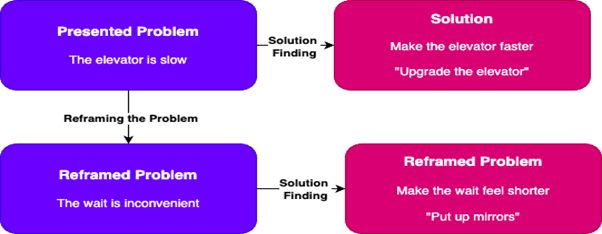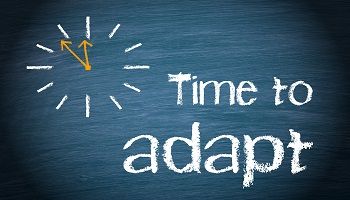Web 3.0: The Future of Process Catalogue Management?
Web 3.0 technology, in my view, can be used for new innovations and has the ability to deliver positive change quicker. Specifically, Blockchain technology could allow for a transparent, automatic and secure way to manage a business’ process catalogue.
Traditionally, when analysing processes things like Upper/Lower Specified Limits, Service Level Agreements, and Defects Per Million Opportunities are used to understand whether a process is performing satisfactorily. This requires a BA to take measurements, validate them and then work with the business to pivot the process back to delivering the agreed standard. The typical business trigger event for this is either automatic or internal– it requires a BA to pick up during routine quality testing, or an actor to notice and raise through an agreed mechanism. This is because the process infrastructure is basically storage; it could be coined as “static management”. This means things can be missed, as humans make mistakes and the data does not work for the business, rather the business works for the data.
There have been recent advancements in technology, namely Web 3.0, which can reduce or potentially eliminate the human error element and turn the process catalogue into a dynamic storage, in which the data works for the business. In particular, Blockchain technology offers several features that could transform the way we work.
A Blockchain has several features, such as: Nodes, Ledger, and Wallets. Nodes are users/devices that hold the ledger, in full or in part. The Ledger is the record of transactions that happen across the blockchain and wallets are areas, in crypto blockchains, where the cryptocurrencies are stored.
At a first glance, this ecosystem seems locked to currencies, I believe it can be adapted to handle processes. Each process would need to be broken down into its steps and identified by its inputs/outputs and business actors. This dataset is then integrated into a blockchain – with each block containing the data from a single process step. In terms of a traditional process map, the block is the process step and the transaction is the connector lines between two process steps. In process terms it would be Step, Connector, Step; in blockchain terms it would be Block, Transaction, Block.
When the process is run, new unique blocks are added to the chain with the details of that unique process step run, which are then linked to further blocks/steps via transactions, providing a completely transparent and auditable record.
This setup has an infrastructure advantage because a blockchain validates transactions through decentralisation, using other blocks already in the chain. It means process rules are embedded in a chain from existing blocks and are then used to validate new blocks, resulting in a guaranteed uniformed process run, as the blockchain would only validate the transactions in accordance with the blocks already there.
The blockchain allows for easy performance monitoring, as each block is recorded with management information as well as process information and this is all in one place, it is easy for an analyst to calculate run times, business actor performance on individual or multiple transactions and process efficiencies.
Once an improvement is identified, the process is updated and released onto the blockchain, then becoming the single-source-of-truth for transaction validation, therefore only allowing the most up-to-date process to be followed by business actors. In this sense, the blockchain is both the governing authority as well as storage for processes.
The problem with this is that it is still reliant on humans picking up on the fact that a process is not performing, so whilst we have an enforceable process level to six sigma, we do not have the benefit of removing the human error or time lag associated with a drop in process performance.
This can be resolved using a feature of a blockchain called a smart contract. Smart contracts are automated digital contracts which trigger when the terms and conditions of that contract are met. There is an equivalent document in the business world, which sets out an agreement between two parties to perform in a particular way or to a particular standard under particular terms – a Service Level Agreement (SLA).
The smart contract is the Web 3.0 equivalent to the SLA. However, a smart contract offers much more than just an agreement, it self-executes which means as soon as the terms are met, action is taken with virtually no time lag.
Advertisement
The smart contract is created using an if/when then statement. An example smart contract can be if a customer makes an enquiry and no one contacts the customer in 3 working days, then an escalation notice is sent to the assigned persons manager. As this is automated, as soon as the condition is met, the contract is acted upon – meaning management do not have to spend time reviewing whether the conditions within SLAs, making both service and personal performance management easier.
There are, however, some issues with blockchains which need further consideration to overcome: a large number of transactions can cause lag on the chain, due to the required effort to process them all, meaning slower transaction times. It may mean that this model is best suited to small startups/businesses. Blockchain technology is still new, and therefore is not thoroughly regulated yet, meaning it can be difficult to fit in with current governance structures. This can be tackled by robust risk management and future legislation or policies, meaning this model may be suited to an innovator type business.
In summary, Web 3.0 Blockchains can offer improvements to the operation, governance and management of processes. By leveraging features of blockchains, it’s possible to move from a static process catalogue to a dynamic, automatic and smart infrastructure which reacts quicker to changes in business environments, freeing up staff to find other efficiencies or grow the business in other ways. While there are concerns and issues around things like scalability and regulations, it is clear that Web 3.0 technologies can offer new and exciting opportunities.





